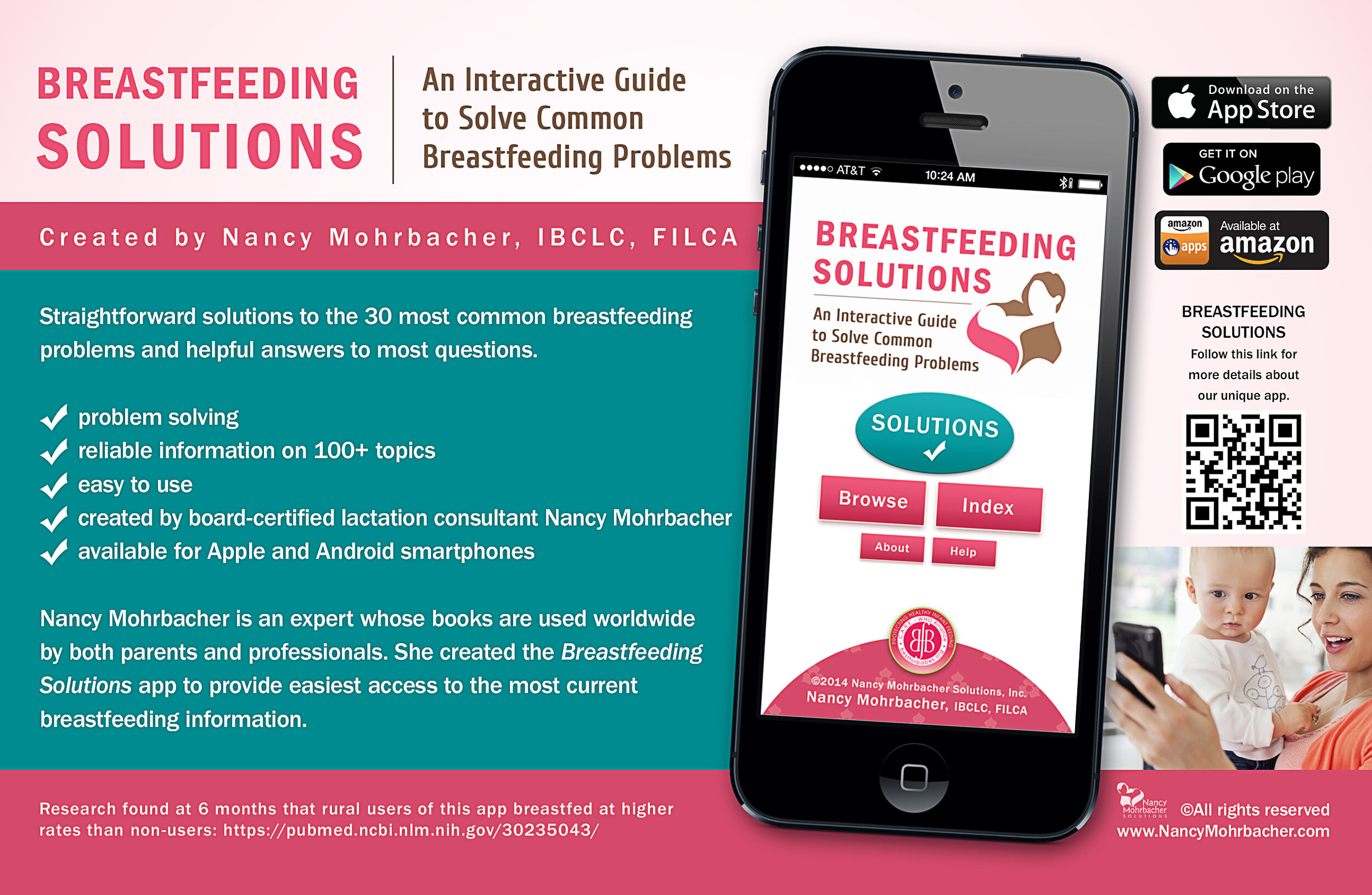Research on the Breastfeeding Solutions App
/Great news! The first STUDY of the usability and impact of the Breastfeeding Solutions app appeared online September 20, 2018 in the Journal of Human Lactation. This small longitudinal prospective cohort study found that nearly 80% of the 29 women who used the app and completed the study surveys at 3 and 6 months were breastfeeding at 6 months. The local average of any breastfeeding at 6 months was 50%--nearly a 30% difference!
Because this Australian study had no control group, the researchers could not infer that the Breastfeeding Solutions app was responsible for this difference in nursing outcomes, but I am still thrilled with this result. When I developed this app, my goal was provide an accurate, easy-to-use digital resource that could help nursing families meet their feeding goals. It is wonderful to receive such positive feedback from this study! (To see how the Breastfeeding Solution app works, scroll to the bottom of this post for a 2-minute video demo.)
The study’s aims were to explore the app’s usability among rural Australian women in a sparsely populated area and to describe the nursing outcomes of the study participants, comparing them to the local average. Because this study is not in an open-access journal, I’d like to share some of its details.
The App’s Usability
Regarding theusability of the Breastfeeding Solutions app, the researchers reported that
94% rated the app favorably
97% found the app helpful
87% would recommend the app to others
Study participants wrote
“Provided me with the information I wanted.”
“For first-time feeders there’s some very relevant and helpful information.”
“Helped me understand the latch.”
Of course, in our digital age, many online sources of breastfeeding information exist. Some study mothers mentioned social media as one alternative source, but as one noted:
“Searching the web comes up with all sorts of contradictions; books become outdated. I think the app, so long as it is regularly maintained and information updated, feels much more trustworthy.” 4
Along these same lines, the researchers wrote that some participants
“…expressed apprehension regarding advice found on the Internet and social media sites, and they were uncertain if the content was trustworthy.”
But what about the paper brochures and handouts many birthing facilities send home with new parents? Is an app a better choice? According to one study participant:
“…pamphlets and booklets all get lost…An app is just perfect.”
Ultimately, the researchers concluded that the app fulfilled the need of these families for evidence-based information.
An App Will Never Replace Personal Help
As this study illustrated, a breastfeeding app can work well as the first source of answers to parents’ questions. But no app can ever replace one-one-one breastfeeding help. Five of the participants commented that health professionals are key to nursing success. Not surprisingly, one study participant wrote: “I still prefer face-to-face contact with a lactation consultant.”
But in some parts of the world, in-person breastfeeding help is not readily available. In places like rural Australia, an app can be a practical tool where the environment is not breastfeeding friendly. As one study mother wrote:
“I needed someone to observe feeding to help with pointers which I could not find where I live…very few places to breastfeed when out….Also in small towns there are hardly any change facilities so you don’t feel encouraged to get out and about.”
Suggestions for Future Improvements
With any breastfeeding resource, there’s always room for improvement. One study mother thought the information in the app was “too generalized.” Certainly, any resource that is not customized to one family’s experience runs this risk. Three of the study mothers suggested that adding more pictures and videos to the app “would have been awesome to better understand what the written information meant.” (This addition is definitely on my list of things to do!)
In their list of key messages, the study authors included:
“The app fulfilled a need and met a gap, providing rural women with access to reliable and evidence-based information regarding breastfeeding, in spite of their location.”
If you are unfamiliar with how the Breastfeeding Solutions app works, watch its 2-minute video demo HERE. The app is available worldwide for Android and Apple devices through the App Store and Google Play.
I am grateful to Australian researchers Nikita Wheaton, Jacinta Lenehan, and Dr. Lisa Amir for being the first to study the Breastfeeding Solutions app. I am also pleased that a larger study on the app is currently underway in southern California, where the plan is to include more than 200 families.
Today’s parents expect to receive breastfeeding information and education in the formats and platforms they prefer. With more and more millennial families having babies, my hope is that the Breastfeeding Solutions app—which we can now recommend as supported by research—will find its way into the hands of many. Please help me spread the word.
Reference
Wheaton,, N., Lenehan, J., and Amir, L.H. (2018). Evaluation of a breastfeeding app in rural Australia: Prospective cohort study. Journal of Human Lactation, doi: 10.1177/0890334418794181





